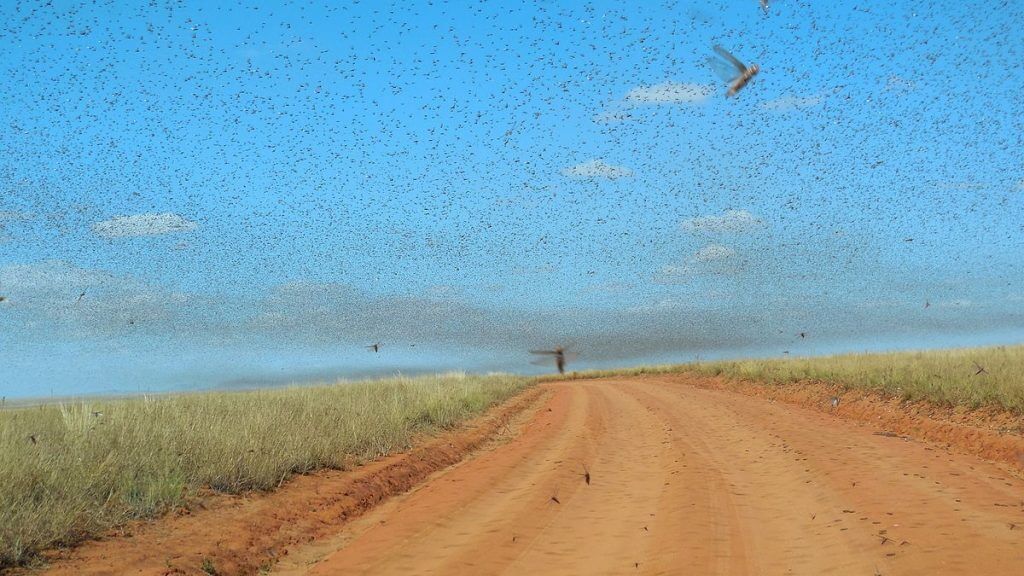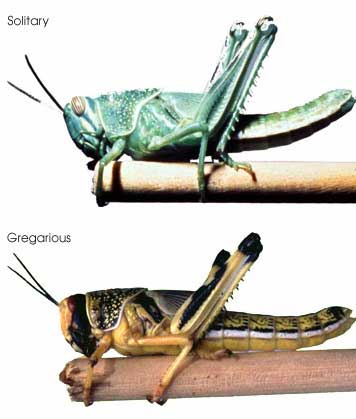Why locusts become a threat?
Jeddah: A locust turn out to be a light weight, harmless insect at first sight. But on a swarm, what they can do to the mankind is a total destruction to the crops and ultimately a havoc, sometimes deeper than that corona virus has created.
The beginning of 2020 witnessed such a vast locust attack in Africa. “It is the locusts that everybody is talking about”, says a villager in Uganda. He continued: “Once they land in your garden they do total destruction. Some people will even tell you that the locusts are more destructive than the corona virus.” As we are approaching the middle of 2020, countries like India, Pakistan, parts of China and recently UAE are affected by them.

Locusts are grasshopper like species, yet they are different from grasshoppers. They have bigger hind legs, that help them to leap and bounce farther. The most recent attacks are caused by ‘Desert locusts’ seen mainly in Africa, Middle East and Asia. The Journal of Experimental Biology says that these herbivores can eat 423 million pounds of plant a day!
How do they come in swarm?
According to the National Geographic, the swarming nature of locusts arise mainly from weather conditions. Normally locusts have high appetite; they always feed on some plants or crops. When drought arises, they run out of greenery and they all end up in a common area where plants are left. Moreover, when locusts swarm, hormone called serotonin is released which make them all the more hungry, their mating increases and movements become rapid and frequent.
How rain affects the locusts?
To aggravate the situation, it rains. Moist soil is a very supporting factor for the locusts to spread. So, they start to lay eggs and in less than a few weeks these eggs hatch and they begin to migrate together. Flying over countries and taking frequent breaks to feed on crops. Biologists call this, a transformation from their solitary phase to gregarious phase.
Gregarious phase of locusts
Locusts are in gregarious phase when they indicate several features apart from being in swarms. It is a change in their bio chemical and behavioural aspects. Even they change physically. They become brighter in colour. Their brain enlarges and hind legs become stronger. This enables them to fly to a large distance, devastating every crop on the way. When all the crops at one place is exhausted, they fly in millions searching the next vegetation that might have formed due to rain.

Locusts in history
The common question heard during these locust attacks is whether they attack man. The answer is no. They will not attack man directly. Also, they will not carry virus or spread infections as rats or mosquitoes do. But the indirect attack from them is much serious. Their multiplication and crop destruction eventually lead to poverty. Especially when the world is already devastated due to corona attack, a subsequent locust attack should be something that must be viewed very seriously. No wonder why locust’s pictures are carved in the walls of Egyptian tombs. Evidences are there about a locust plague that shattered Egypt during the time of Moses. The Holy Quran mentions locust attacks. Aristotle studied about the locust life cycle. Titus Livius recorded a perilous locust attack in 203 BC; all these point out the harm they could be to the life on this planet.




![The Top & Most Popular Seafood Bucket Restaurants in Dubai for you [Never Miss]](https://uae24x7.com/wp-content/uploads/2020/09/8-seafood-in-a-bucket-scaled-e1600739237403.jpg)
![Procedures for Renewing the Driving License in Abu Dhabi [3 Simple Steps]](https://uae24x7.com/wp-content/uploads/2020/07/Capture-9-e1595666454466.jpg)





